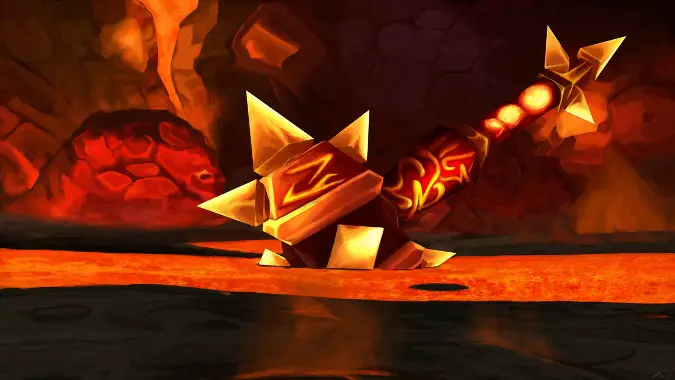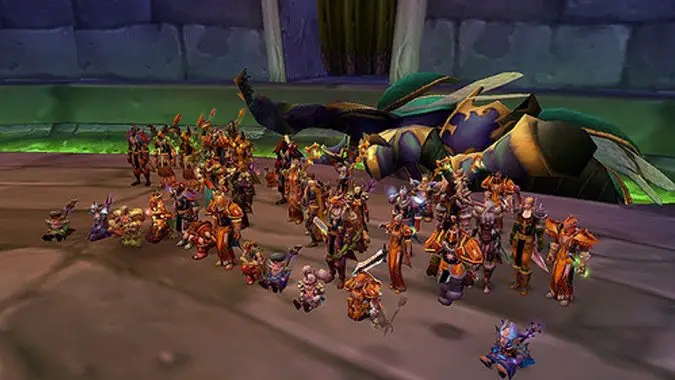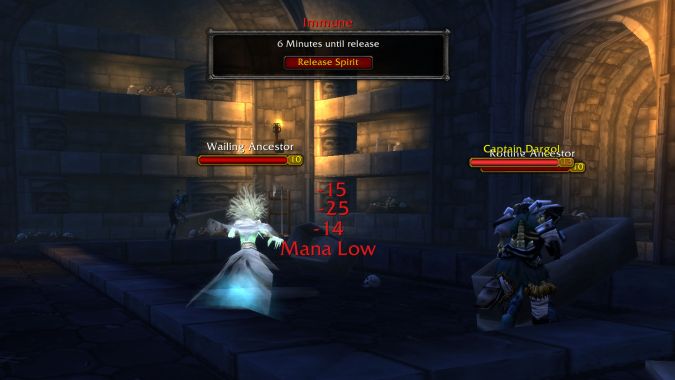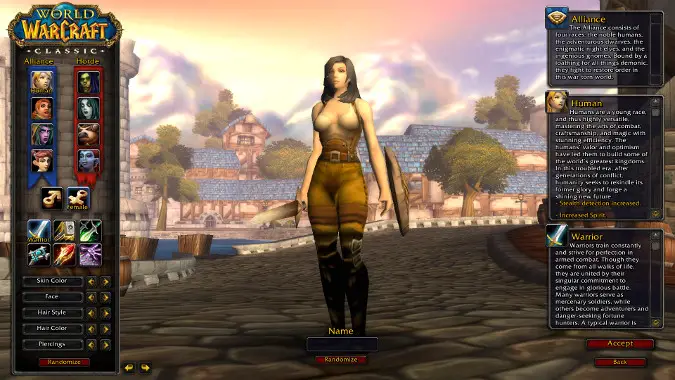Remember Spirit? WoW Classic’s primary and secondary stats are a little different than what you’re used to

Okay, so you’re about to play WoW Classic and you want to know what the stuff on your gear means. Not only does WoW Classic have stats that no longer exist in the game, it doesn’t have many that debuted later. But the basic idea of primary and secondary attributes that was crucial to itemization in the original game is retained in the modern game, and should be comprehensible to players who never played back then as well as old timers like myself who were raiding Naxx 40.
But there are also systems that are wildly different now, and the way these attributes are calculated and interact with gear will definitely be something you’ll have to get used to. For example, in the modern game we use a rating system for secondary stats like Critical Strike, where it takes a certain amount of Critical Strike Rating to equal 1% crit. That amount goes up as you level so it takes more CSR to get 1% Crit at level 120 than it does at 119. This system encourages you to abandon older gear that doesn’t have enough of those ratings as you level, but it didn’t exist in vanilla — an item with 1% Crit on it will be as powerful when you’re level 60 as it was whenever you got it.
Changes like that make a big difference in how you level, so let’s talk about the attributes you’ll find in WoW Classic.

WoW Classic’s Primary attributes
In the current game, the primary attributes are Strength, Stamina, Agility, and Intellect. In WoW Classic, Spirit was also considered a primary attribute. You may be scratching your head and saying What even is Spirit, if you only played World of Warcraft after the launch of Legion, because it was removed in patch 7.0.3.
Strength in WoW Classic is useful for gaining melee attack power, which added to weapon damage.
- Druids, Shaman, Warriors, and Paladins: +2 AP for every point of Strength
- Rogues, Hunters, Mages, Warlocks, and Priests: +1 AP per point of Strength
- Shaman, Paladins, and Warriors: With shields, these classes had a chance to block 1 point of damage per every 20 points of Strength
Strength was useful for pretty much every melee class, with the plate classes (Warriors and Paladins) really prizing it.
Agility increased melee attack power, ranged attack power, critical strike chance, dodge chance, and armor. It was essential for physical DPS classes.
- Hunters: +2 ranged attack power per point of Agility
- Warriors and Rogues: +1 ranged attack power per point of Agility
- Rogues, Hunters, and Cat Form Druids: +1 melee attack power per point of Agility
- Hunters: +1% crit for every 53 points of Agility
- Rogues: +1% crit for every 29 points of Agility
- Druids, Warriors, Paladins, and Shaman: +1% crit for every 20 points of Agility
- Everyone: +2 armor per point of Agility
- Everyone (except Hunters and Rogues): +1% dodge per point of Agility
- Hunters: +1% dodge for every 26 points of Agility
- Rogues: +1% dodge for every 14.5 points of Agility
Essentially, almost every melee or tanking class wanted some Agility, with Hunters and Rogues absolutely slathering on the stuff.
Stamina is the simple one. For every point of Stamina you have, you get 10 hit points.
Intellect directly contributed to your Mana pool, and it was a must-have stat for all healers and ranged DPS — even Hunters wanted some of it, as they used Mana in vanilla WoW. Only Warriors and Rogues could ignore the stat outright. It also granted Spell Critical Strike Chance, with each class gaining 1% Crit with their spells at different rates.
- Everyone: +15 mana per point of Intellect
- Druids: +1% Spell Critical for every 60 points of Intellect
- Mages: +1% Spell Critical for every 59.5 of Intellect
- Paladins: +1% Spell Critical for every 54 points of Intellect
- Priests: +1% Spell Critical for every 59.2 points of Intellect
- Shamans: +1% Spell Critical for every 59.5 points of Intellect
- Warlocks: +1% Spell Critical for every 60.6 points of Intellect
Spirit, meanwhile, was the primary means to regenerate mana in vanilla WoW, and it will be so again in WoW Classic. Spirit also affected health regeneration when out of combat, but it is unlikely for a non-caster class to have enough Spirit for that to matter and it would be a very poor gearing strategy since you’d lose so much else to stack Spirit for a health regen benefit you’d only get out of combat.
Spirit was most useful for casters who could employ what we called the “Five Second Rule” — namely, Spirit started to regenerate your mana when you didn’t cast any spells for five seconds, even while you were in combat. So if you could either predict exactly when your healing targets were going to take damage so you have windows of non casting to regenerate your mana or if you could count on someone else to heal for a while and let you regen, Spirit was a solid means to regenerate mana, especially in big 40-player raids. Mana would regenerate every 2 seconds after that five second window had passed until you cast another spell, how much depending on your class and the amount of spirit you had.
Different classes had different formulas for calculating Spirit-based regen:
- Caster Druids: Spirit/4.5 + 15
- Feral Druids, Hunters, Paladins, and Warlocks: Spirit/5 + 15
- Mages and Priests: Spirit/4 + 12.5
- Shaman: Spirit/5 + 17
It should be noted that the Druid talent Innervate made it so you boosted your regeneration based on Spirit and didn’t have to wait for the Five Second Rule, and so it was very important for mana regeneration for healers back in classic.

WoW Classic’s secondary attributes
So far we’ve been talking about the five big shots, the primary attributes that a lot of our power derives from. But what about the secondary attributes?
Secondary attributes to pay attention to are Armor, Block, Dodge, Parry, Defense, Critical Strike Chance, Hit Chance, Attack Power, Spell Power, Spell Critical Strike Chance, Healing Power (like Spell Power, but for how hard your heals land), and more. Most of these are self-explanatory, but others you may need some help untangling.
Weapon Skill was literally meant to represent how skilled you were with a chosen weapon, and could be increased up to level 300 at level 60, or five times your level. But items with Weapon Skill, such as Edgemaster’s Handguards could push you past that 300 Weapon Skill and reduce the chance for bosses —which were all effectively level 63 — to dodge or parry your attacks. You also gained Critical Strike and Hit Chance for every point of Weapon Skill, +.04% per point.
Defense is long gone, but it was vital to tanking while it existed, because it kept bosses from destroying tanks. Defense pushed things like Crushing Blows off of the hit table and kept tanks from being critically hit. In order to push crits entirely off of the table, you’d need 440 defense at level 60 — 300 was the max for an ungeared level 60 player, so you needed an extra 140 Defense from gear. Combined with other avoidance (Dodge, Parry, and Block), Defense could help you keep from being Crushed as well, but it was a challenge to gear up a tank sufficiently to entire negate Crushing Blows. Each point of Defense gave 0.04% dodge, 0.04% parry, 0.04% block, 0.04% reduced chance to be hit and 0.04% reduced chance to be crit.
As a tank, you’ll want to balance your various Avoidance abilities so you’re not overly reliant on any one of them. Defense is a great stat, pound for pound, but you can’t just chase Defense and forget everything else, especially not at first — there simply won’t be enough of it.
Primary attributes affect many secondary attributes. For instance, you can derive your Melee Attack Power from your Strength or Agility, based on your class. You can also have gear that has Attack Power on it, and that AP on gear will add to both your Melee and Ranged Attack Power. For example, the Gloves of Holy Might (a rare world drop) had no primary attributes at all, but directly added +crit, +AP, and even more +AP when fighting Undead.

So how should I gear in WoW Classic?
Until you’re level 60, just go for your primary attribute and take whatever lucky drops you get that add to your secondary attributes. WoW Classic is going to mean getting through 59 levels before you really have to worry too much about secondary stats on gear — stacking Agility on your Rogue will likely be more than enough for a long time. But it’s worth knowing that these stats exist, and what benefits they have.
In many cases, you simply won’t have to worry too much about secondary attributes like Hit Chance unless you’re playing a specific class with a high miss chance — like a Rogue because of dual wielding — so it’s just not worth worrying about. Certainly while you’re leveling, it’s best to focus on the best of those big five primary stats and with those, more is always better.
Please consider supporting our Patreon!
Join the Discussion
Blizzard Watch is a safe space for all readers. By leaving comments on this site you agree to follow our commenting and community guidelines.
 @MatthewWRossi
@MatthewWRossi



